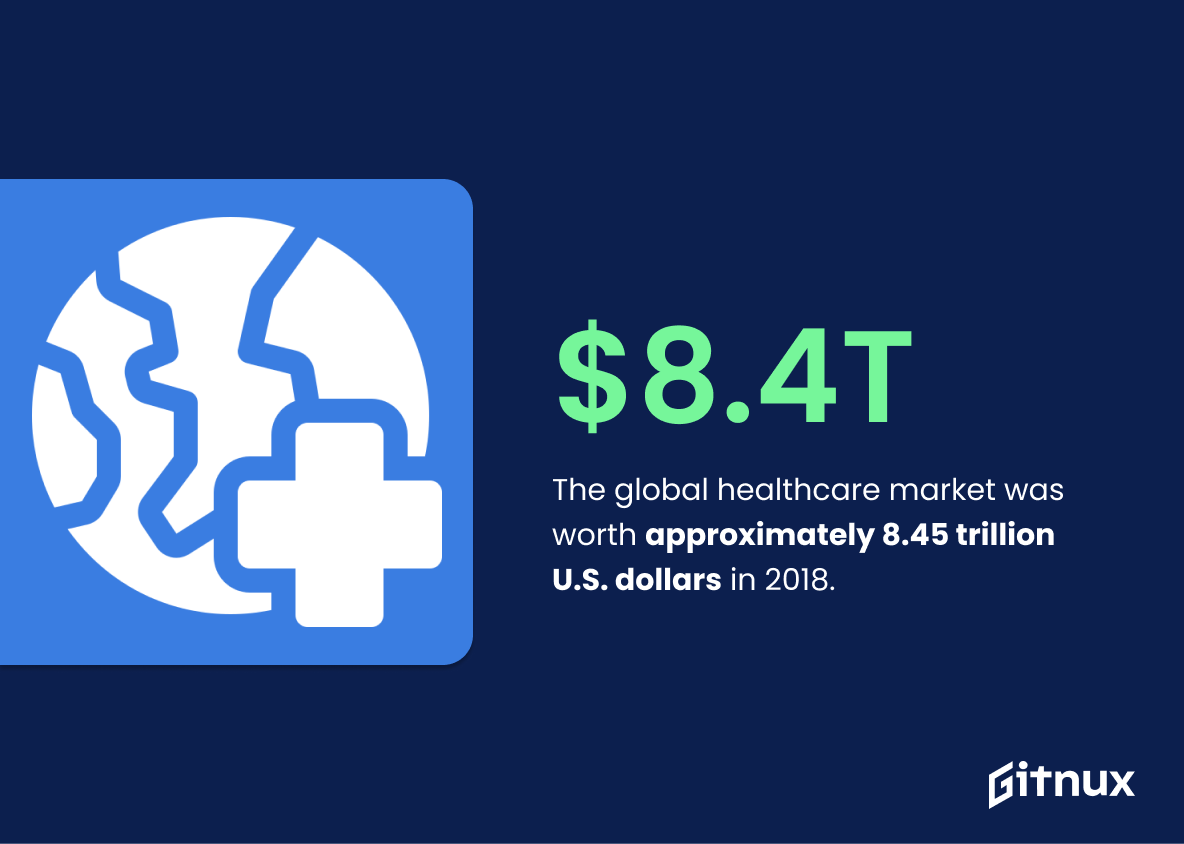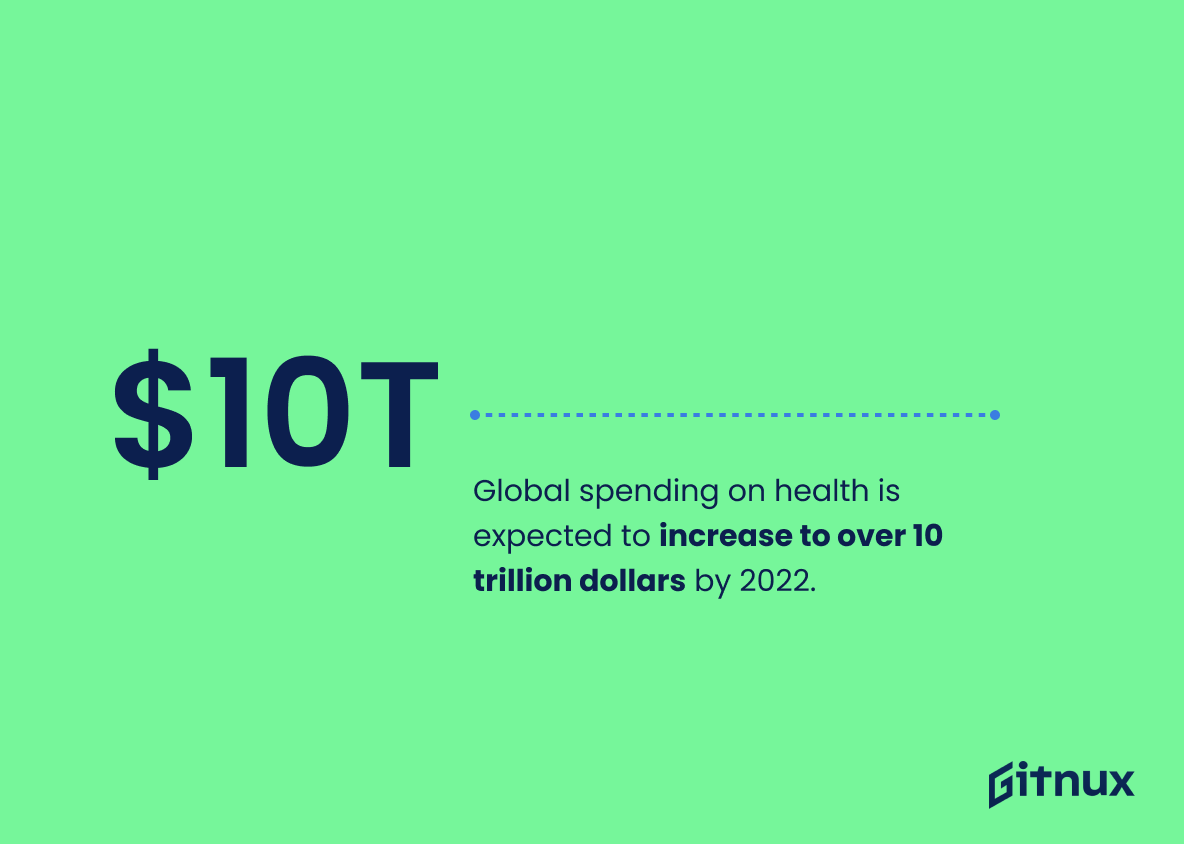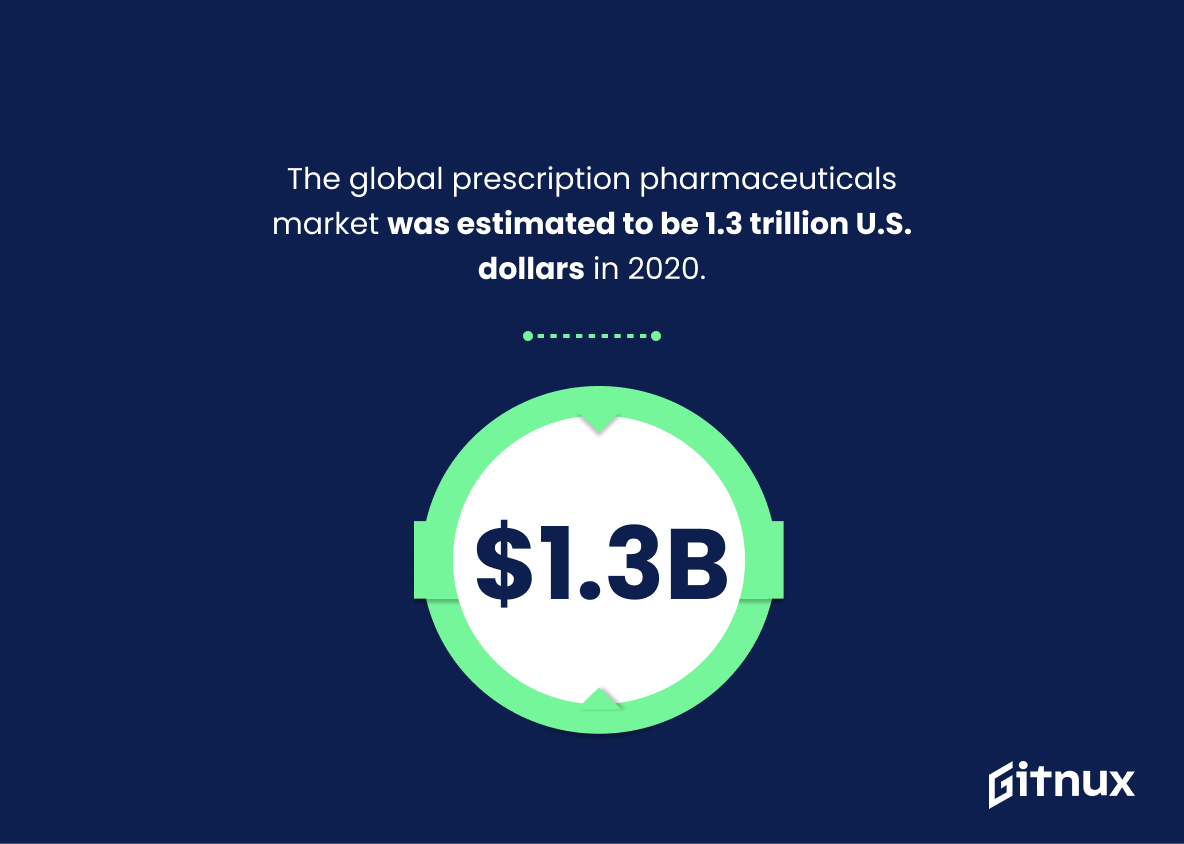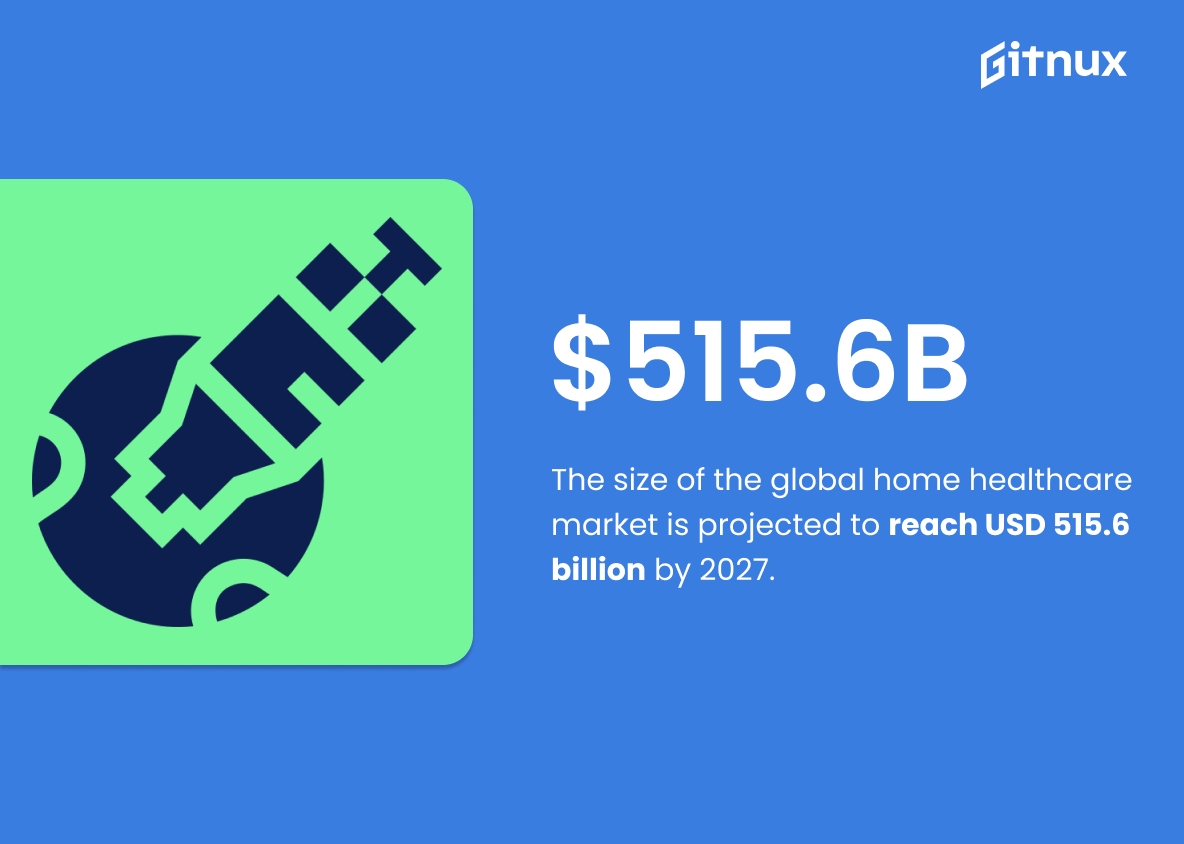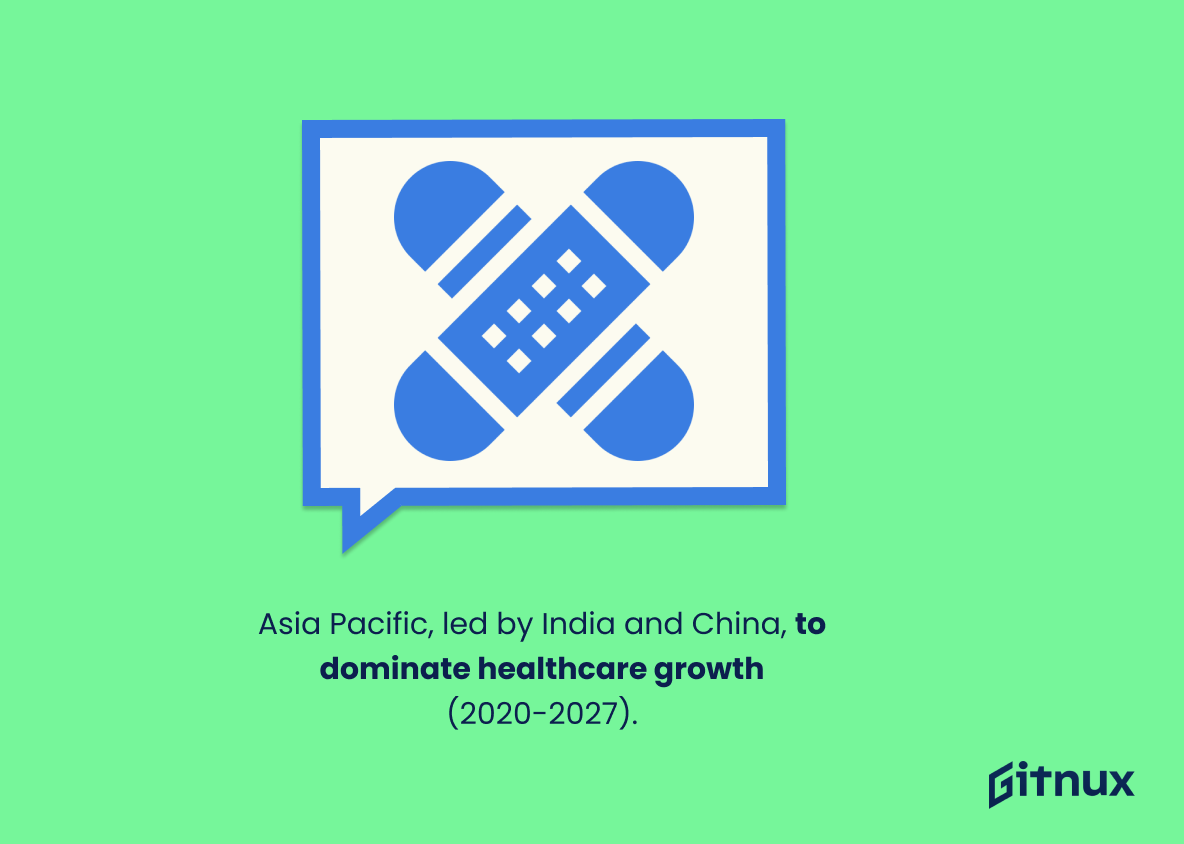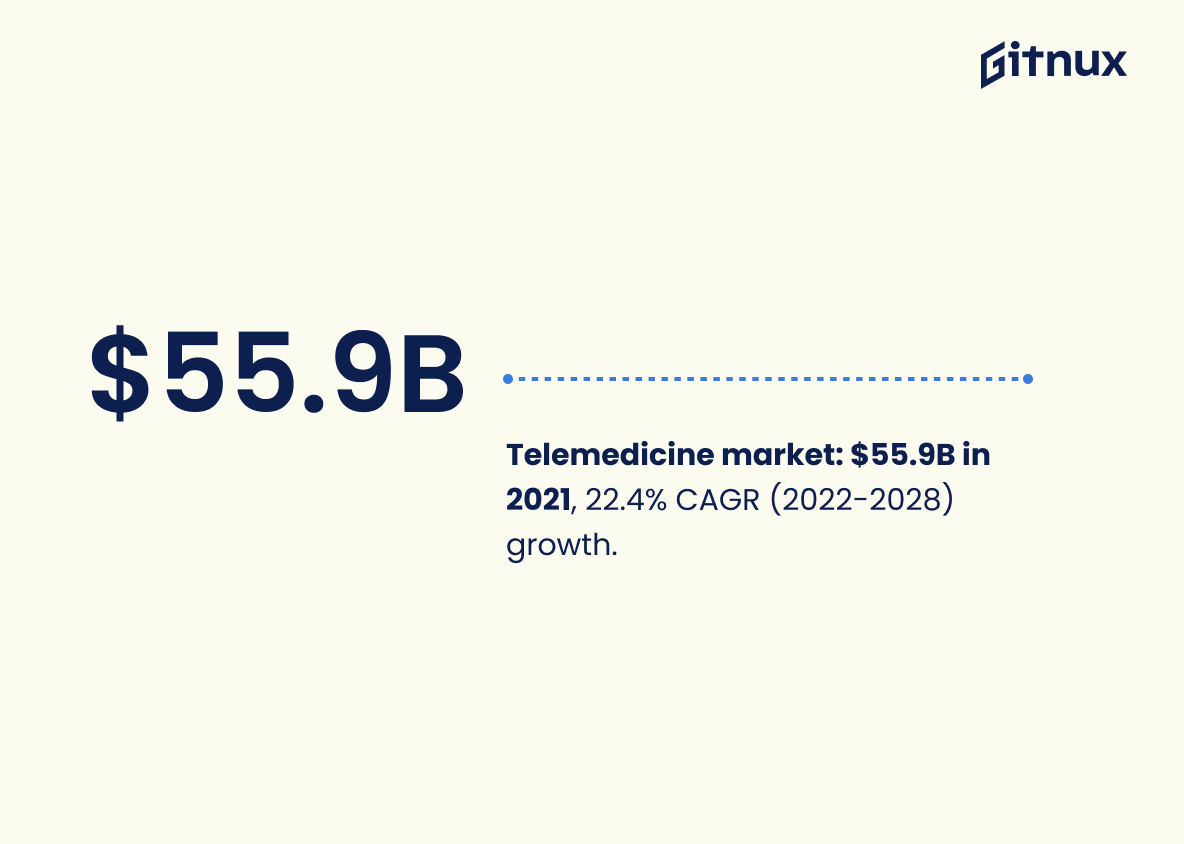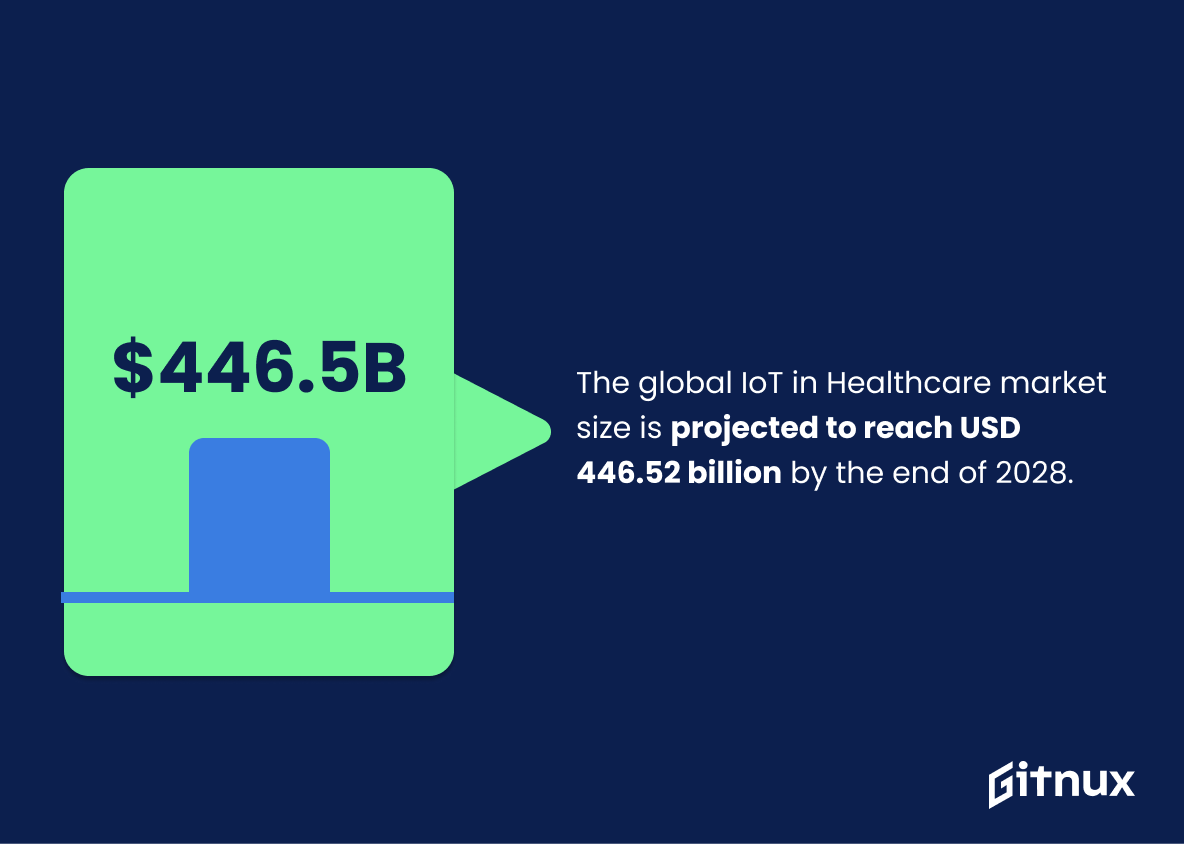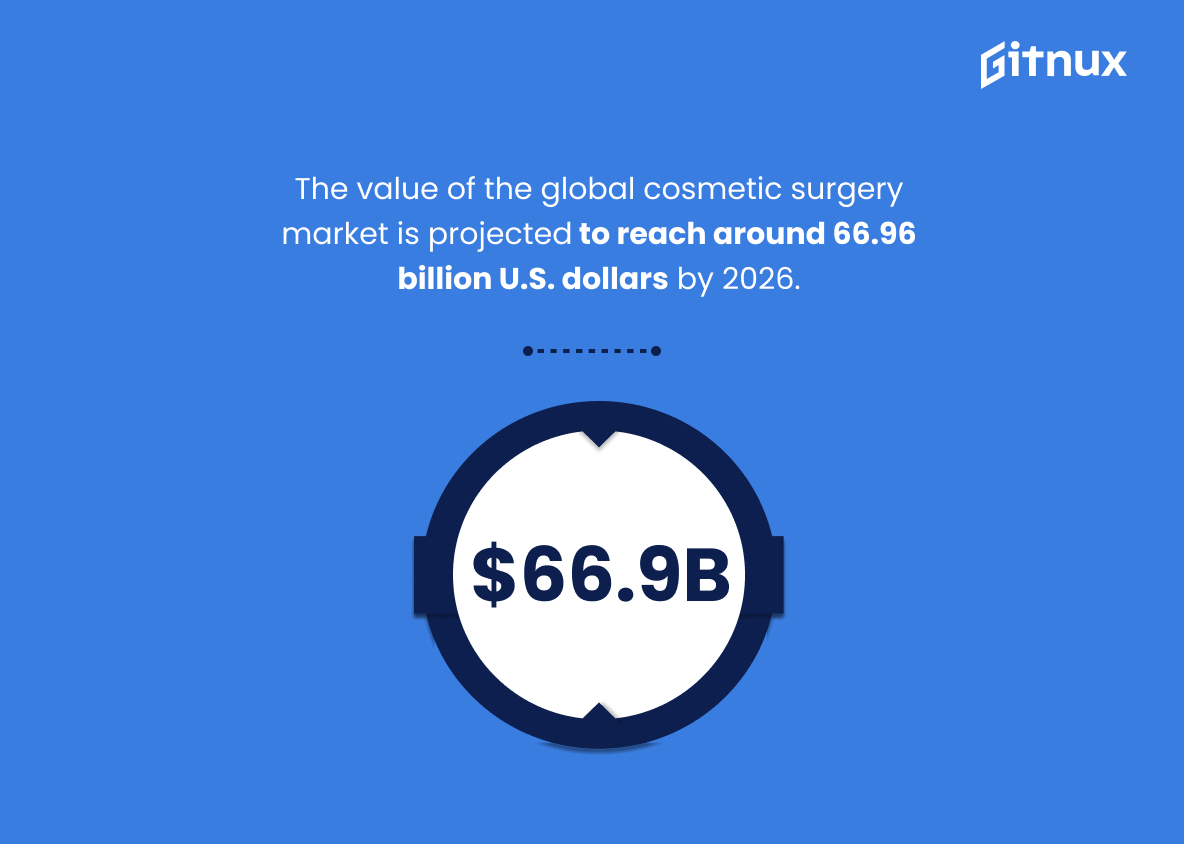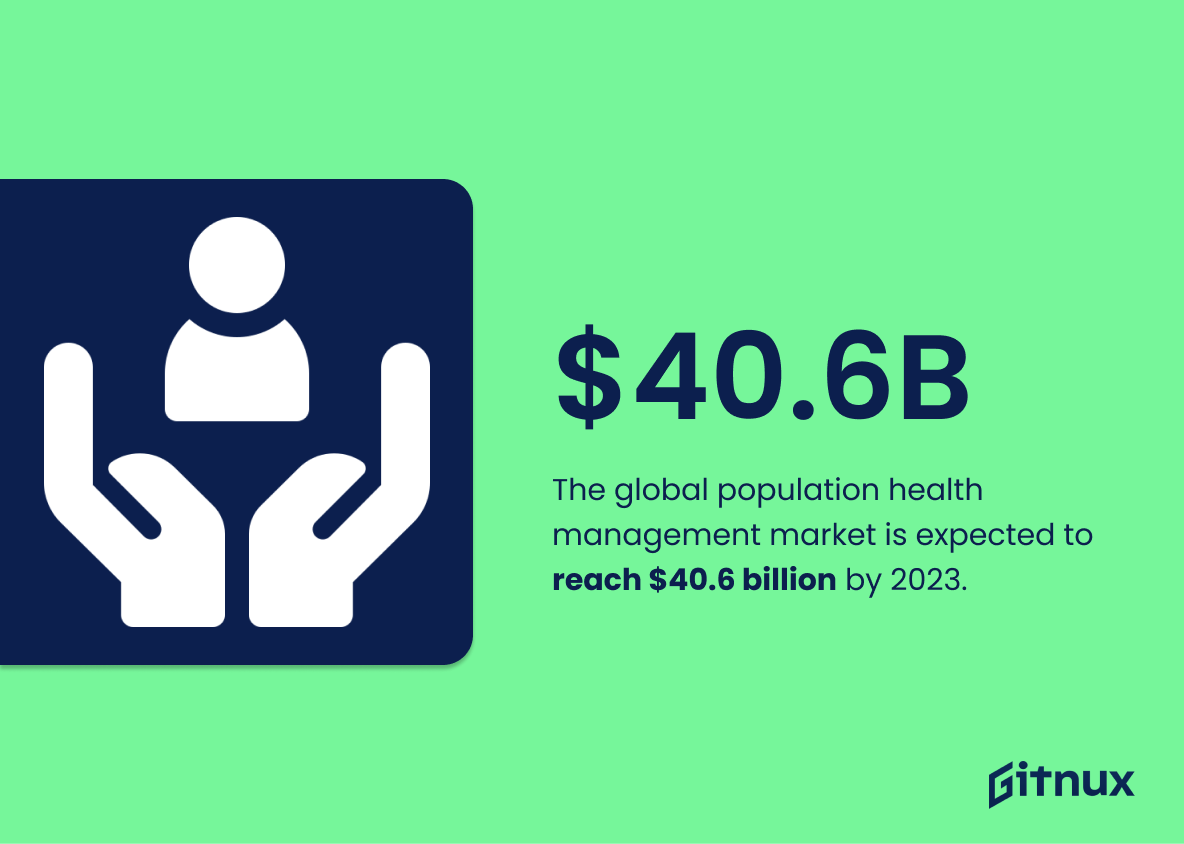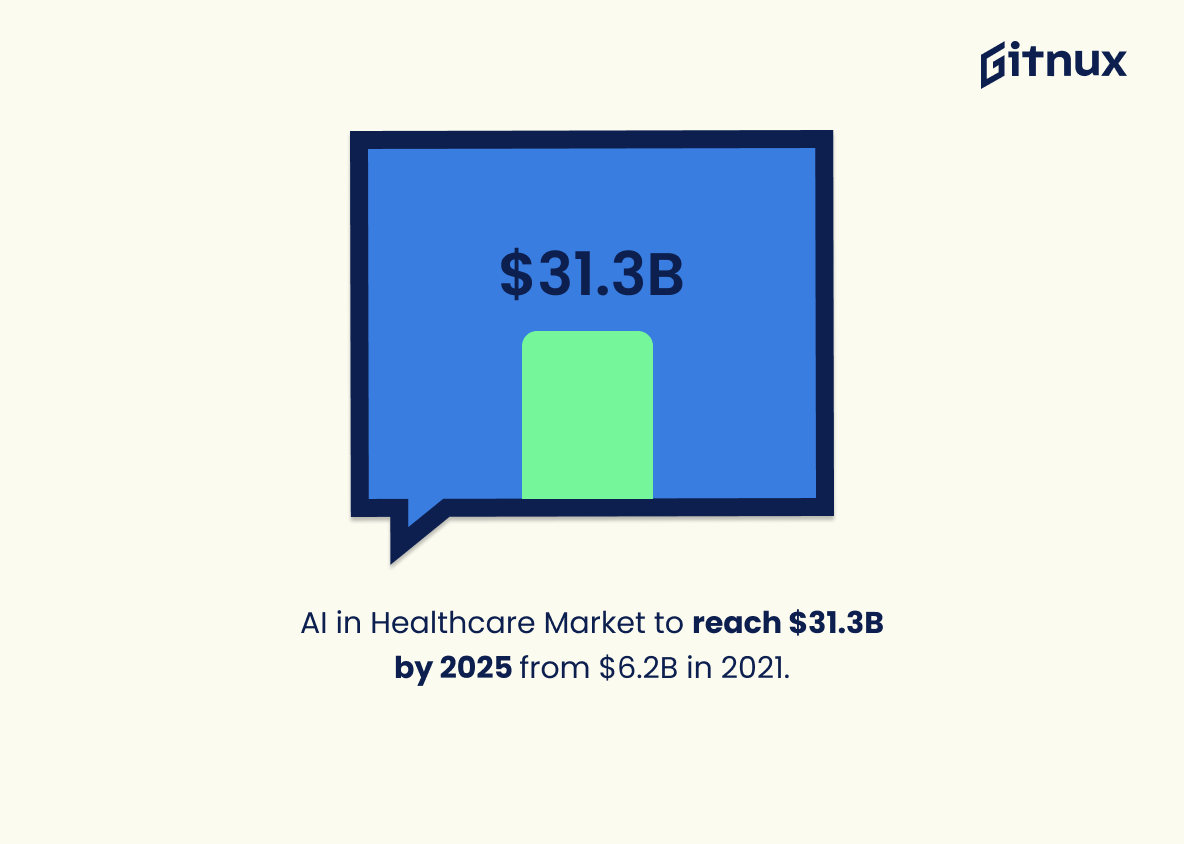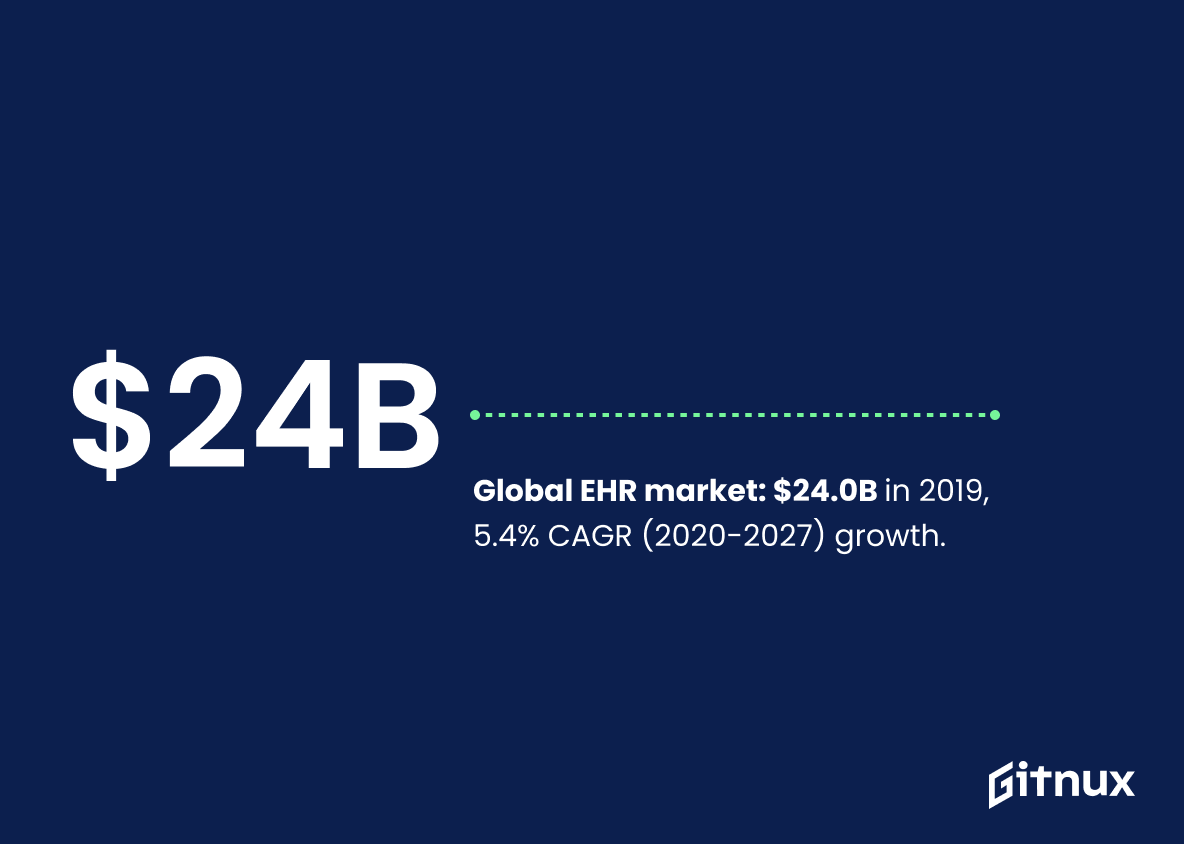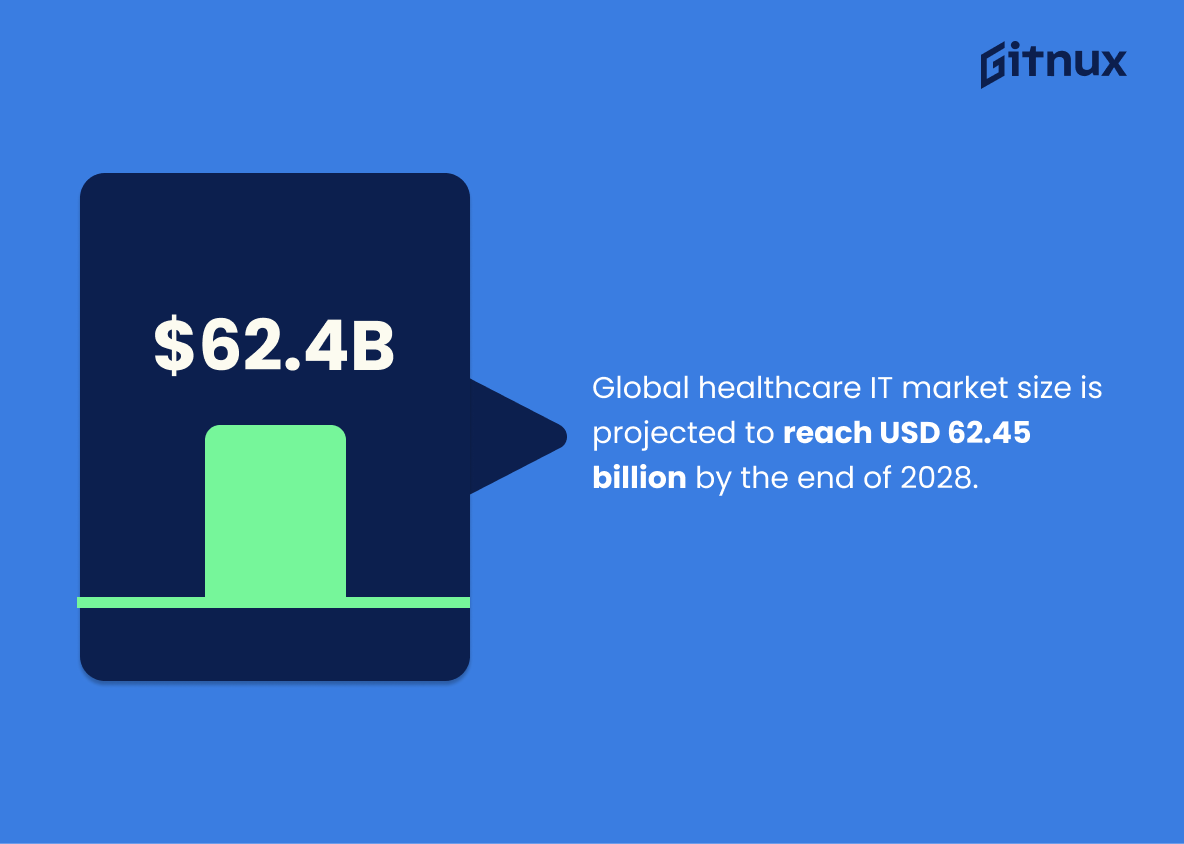As we navigate through the intricacies of our increasingly interconnected global community, healthcare continues to be a leading conversation and concern. The Global Healthcare Industry is a vast and dynamic sector, continually evolving in response to the world’s shifting demands and technological advancements. To understand this complex landscape, a solid grasp of the industry statistics is crucial. This blog post aims to shed light on the significant numbers, figures, and data of the global healthcare sector, offering a comprehensive snapshot of its current state. From healthcare spending to advancements in telemedicine, we’ll dive deep into the metrics that are shaping healthcare around the world.
The Latest Global Healthcare Industry Statistics Unveiled
The global healthcare market was worth approximately 8.45 trillion U.S. dollars in 2018.
In the bustling sphere of the global healthcare industry, the statistic that the market was valued around 8.45 trillion U.S. dollars in 2018 serves as a powerful testament to the sheer economic magnitude and potential for growth in this sector. It draws attention to the fact that healthcare is not just about saving lives, but also a key contributor to the globe’s economic fabric. This monetary watermark provides a backdrop for discussions about funding, investment opportunities, and budgetary considerations. With this fiscal knowledge, one can better synthesize the expansive vitality and influence that healthcare industry carries not only in terms of humanistic impact but also in economic terms.
The world health expenditure per capita was approximately 1,064 U.S. dollars in 2016.
Serving as a foundational marker, the statistic that the global health expenditure per capita reached approximately 1,064 U.S. dollars in 2016 illuminates the sheer grandeur and gravity of the global healthcare industry. It not just unfolds the rampant expenditure dedicated to healthcare worldwide, but also underlines the substantial demand and pressing need for quality healthcare globally. Taking this expenditure into account can arm readers with vital knowledge about the financial landscape of the industry, thereby providing accurate quantifiable background information for a more thorough understanding of the subject at hand. This illustrates the scale, size, and reach of the healthcare industry, reinforcing its pivotal role in the global economy and the lives of human beings.
Global spending on health is expected to increase to over 10 trillion dollars by 2022.
Forecasting a monumental surge to over $10 trillion in global health expenditure by 2022 underlines a pivotal narrative in the ongoing saga of global healthcare industry: the rising importance and prioritization of health on both individuals and governmental expenditure agenda worldwide. It signifies a profound shift in global spending patterns, heralding an era where health is no longer sidelined, but occupies a core position. This could potentially drive innovation, facilitate better healthcare access, and propel health outcomes to unprecedented heights. This statistic serves as a bellwether, signalling not only a financial change, but a transformation in social, political, and economical landscape reshaping the global healthcare industry.
The global connected health market was valued at 2 billion USD in 2019.
In a compelling narrative about global healthcare industry statistics, our attention is arrested by the valuation of the global connected health market. Clocking in at a powerful 2 billion USD in 2019, this figure not only underscores the financial heft of this sector, but also illuminates the growing reliance on technology in healthcare.
The palpable financial value of the connected health market acts as a beacon signaling technological prowess and innovation. This is not merely a number on a page – it reveals the extent of integration between healthcare and technology, harking to an era where remote and digital solutions are becoming indispensable in patient care.
Moreover, it foreshadows potential surge in investments and advancements in this sphere, proving it to be a worthwhile topic of focus in the blog post. Ultimately, this single, potent statistic serves to trailblaze a discussion on connectivity, innovation, and technological triumph in the global healthcare industry.
The global prescription pharmaceuticals market was estimated to be 1.3 trillion U.S. dollars in 2020.
In framing the enormity of the global healthcare industry, let’s turn the spotlight on a compelling number: The global prescription pharmaceuticals market, scaling a staggering 1.3 trillion U.S. dollars in 2020. This titanic figure does not merely attest to the vastness of the prescription meds industry, but when pieced together with other market sectors, it paints a broader, more impactful picture of global healthcare. Each dollar, each transaction in this colossal aggregate, represents an interplay of economic and health dynamics – the patient’s pursuit of wellness, the healthcare industry’s research and development efforts, and the market’s response to consumer need. With this in view, healthcare policy measures, business decisions, and even personal health choices can be fine-tuned and directed with a clearer sense of the industry’s breadth and depth.
The size of the global home healthcare market is projected to reach USD 515.6 billion by 2027.
Unfolding the multiple layers of this enlightening statistic, one can perceive the expanding magnitude of the global home healthcare market. The forecasted growth to USD 515.6 billion by 2027 not only underlines the financial potential of this sector, but also shapes a narrative of an evolving healthcare paradigm where home healthcare is becoming increasingly indispensable.
The significance of this statistic in a blog post about Global Healthcare Industry Statistics cannot be overstated. It serves as a beacon, guiding the readers through the shifting trends in the healthcare landscape, enlightening them about the mounting relevance and investment possibilities in the home healthcare industry today.
Moreover, coupled with the discussion of other key metrics and indicators, this profound piece of data paints a comprehensive picture of where the future of healthcare is steering. It enables the audience to comprehend the intricacies of global healthcare trends, and their implications on practitioners, policymakers, patients and the overall investing community.
Hence, with the projection of the global home healthcare market soaring to USD 515.6 billion by 2027, it palpably resonates in the backdrop of the cosmic healthcare theater – evolving, expanding, and brimming with endless opportunities.
The Asia Pacific region is expected to be the fastest-growing in the global healthcare market from 2020 to 2027, with India and China being the frontrunners.
Witnessing the expected remarkable growth of the Asia Pacific region in the global healthcare market from 2020 to 2027, with China and India leading the charge, is akin to watching a rising phoenix. This prospective ascension showcases the potential for these countries not just as direct participants in local health improvement, but also as significant contributors to the global healthcare narrative.
The pace of this transformation is crucial in the context of Global Healthcare Industry Statistics, acting not as a mere footnote, but rather a headline in its own might. It highlights the shift in global healthcare dynamics, indicating a new age where the East plays a pivotal role. The Asia Pacific’s vigor, as evidenced by the projected surges in India and China, signifies opportunities for multinational companies to participate and invest in, invites technological innovation safeguarding public health, and ideally impacts the concerted efforts towards universal health coverage. On the whole, this trend promises a compelling narrative of growth, suggesting a more dynamic, inclusive and resilient global healthcare landscape ahead.
Global telemedicine market size was valued at USD 55.9 billion in 2021 and is expected to grow at a compound annual growth rate (CAGR) of 22.4% from 2022 to 2028.
Telemedicine is rapidly reshaping the contours of the global healthcare industry. When we focus on the valuation of USD 55.9 billion in 2021, the impressive scale of this new facet of healthcare cannot be ignored. Projected to leapfrog at a compound annual growth rate of 22.4% from 2022-2028, telemedicine is poised to be a significant contributor to the healthcare sector.
This transformative growth can be not only an indicator of advancing technology but, more importantly, a determinant of access to healthcare services, quality improvement and cost-effective healthcare solutions. Drawing attention to the rising importance of digital health and how it’s fundamentally changing overall healthcare dynamics, this statistic could serve as a bellwether of industry trends and a gauge of prospects, highlighting future avenues for investment and development in the healthcare sector globally.
The global IoT in Healthcare market size is projected to reach USD 446.52 billion by the end of 2028.
The monumental projection of the global IoT in Healthcare market size reaching USD 446.52 billion by 2028 provides a thrilling lens into the future of the global healthcare industry. This signal points towards an industry that is not just evolving, but experiencing an advanced transformation. In our digital era, the fusion of healthcare and technology is driving the industry towards new heights, with IoT steering the ship. The notable figure demonstrates the potential profitability, growth, and investment opportunities in the sector, affirming that the combination of health and tech isn’t just the future – it’s a goldmine worth billions. Furthermore, this estimate mirrors the escalating demand for technologically advanced healthcare solutions. Therefore, a blog post delving deep into the details of global healthcare industry cannot ignore such potent indication of where the industry pulse beats the loudest – the union of IoT and healthcare.
The value of the global cosmetic surgery market is projected to reach around 66.96 billion U.S. dollars by 2026.
Nestling this impressive statistic within a blog post about Global Healthcare Industry Statistics, illuminates a facet of the healthcare spectrum that is growing at an astonishing rate – cosmetic surgery. The projection of the cosmetic surgery market to a staggering figure of around 66.96 billion U.S. dollars by 2026 embodies a dynamic shift in healthcare patterns. No longer is healthcare confined to disease treatment and prevention; instead, it engulfs the pursuit of beauty, refinement, and self-improvement. This reshaping of the market indicates new avenues for investment, innovation, and overall industry growth. It underscores how socio-economic trends impact this robust industry, and emphasizes the need to widen the lens through which we perceive and discuss global healthcare.
The global population health management market is expected to reach $40.6 billion by 2023.
Highlighting the anticipated growth of the global population health management market to $40.6 billion by 2023 paints an impressive picture of the onward momentum of the healthcare industry worldwide. This projection is no minor detail; indeed, it serves as a striking hallmark of the industry’s evolution, underscoring the increasing recognition of population health management as a pivotal component in modern healthcare strategies. Moreover, it telegraphs a future where healthcare is not only a reactive measure to illness but a proactive tool for promoting and maintaining health, indicative of the significant strides being made in prevention, early intervention, and patient-centric care strategies. This encapsulates the shift in paradigms from individual to population-wide health management, setting the stage for discussions about the healthcare industry’s role within this transformative context.
The size of the Artificial Intelligence (AI) in Healthcare Market is expected to grow from USD 6.2 billion in 2021 to USD 31.3 billion by 2025.
Charting a compelling trajectory, the escalation of Artificial Intelligence (AI) in Healthcare Market from a substantial base of USD 6.2 billion in 2021 to an imposing stature of USD 31.3 billion by 2025 holds significant implications for the global healthcare industry. This meteoric rise, quantified in stark billions, underscores the burgeoning role of AI in reshaping and revolutionizing the healthcare landscape. It is illustrative of the dynamic fusion of cutting-edge technology and healthcare, a trend catapulting the industry towards unprecedented horizons of efficiency, precision, and patient-centric care. With AI’s promising potential to streamline diagnostics, optimize patient outcomes, and enhance overall healthcare delivery, this statistic serves as a powerful testament to the transformative wave sweeping across the global healthcare industry.
The global EHR (Electronic Health Records) market was valued at $24.0 billion in 2019 and is expected to grow at a CAGR of 5.4% from 2020 to 2027.
In the void of the Global Healthcare Industry Statistics discussion, the thundering echo of the EHR market’s value and projected growth pierces through. Valued at a staggering $24.0 billion in 2019, this technological titan stands on the precipice of a monumental growth spurt, with forecasters eyeing a 5.4% CAGR from 2020 to 2027.
These figures present compelling evidence of the industry’s digital transition, demonstrating the increasing reliance on technology to streamline health services. EHRs are undoubtedly a pivotal cog in the machinery of modern healthcare; their growing influence signals a shift towards a more integrated model, fostering improved coordination and enabling comprehensive care.
Moreover, the projected surge in market growth sheds light on the amplified emphasis on healthcare efficiency. It’s an illustrative mirage of a future where digital solutions like EHRs are interwoven into the fabric of healthcare – lifting standards, accelerating processes and empowering professionals.
Thus, this statistic serves as a lens – offering a profound insight into not just the current landscape, but the direction in which the wind is swaying, steering the Global Healthcare Industry towards a tech-enriched horizon.
Global healthcare IT market size is projected to reach USD 62.45 billion by the end of 2028.
Forecasting an impressive swell to USD 62.45 billion by 2028, the global healthcare IT market emerges as a potent force shaping the landscape of the medical sector worldwide. Such a statistic not just punctuates the narrative of a blog focused on Global Healthcare Industry Statistics; it adds dimensions to it.
Firstly, it powerfully illustrates the growing adoption and importance of Information Technology in healthcare – an aspect impossible to ignore for any comprehensive analysis or perspective regarding the sector. The growth also highlights the increasing focus on efficiency, precision, and patient-centric care across the globe.
Secondly, it provides a quantitative measure to the impact of numerous factors fuelling its growth – be it government policies, technological advancements, or the pressing demand for remote medical services in the wake of situations like a pandemic.
Therefore, this statistic emerges as a veritable testament to the evolution of the healthcare industry, offering insights in the past and predictions for the future, making every blog post on global healthcare truly contemporary and insightful.
The global health insurance market size was valued at USD 1.5 trillion in 2020 and is expected to register a compound annual growth rate (CAGR) of 5.6% from 2021 to 2028.
Undoubtedly, the aforementioned statistic serves as a profound indicator of the growing significance and dynamics of the global health insurance market, painting a broader picture of the Global Healthcare Industry landscape. By showcasing an impressive value of USD 1.5 trillion in 2020, it underscores the mammoth financial scale of this particular sector, thereby emphasizing its impact on world economies.
Furthermore, the forecasted Compound Annual Growth Rate (CAGR) of 5.6% from 2021 to 2028 gives game-changing insight into the positive trajectory and the robust growth potential of the health insurance industry over the next few years. This projected path for growth not only signifies the ever-increasing demand for good health insurance plans but also gestures towards booming opportunities for businesses and investors in the global healthcare realm.
Ultimately, this statistic serves as testament to two key narratives for a blog post about Global Healthcare Industry Statistics: the health insurance sector’s consequential role in global economies and its steadfast momentum towards future growth.
The worldwide revenue for medical devices, i.e., a broad category of the healthcare industry, was $427.5 billion in 2018.
Highlighting the worldwide revenue for medical devices at a staggering $427.5 billion in 2018 offers a journey into the heart of the colossal machine that is the global healthcare industry. This figure, no less than a titan in itself, reflects the sheer scale and impact of medical devices on the industry. It adds a degree of scale, underscoring how these lifelines of modern medicine contribute massively to the industry’s financial footprint. In essence, this concrete value enhances our understanding of the industry’s holistic picture, emphasizing the fiscal power and potential for growth for one of the world’s most vital industries.
Conclusion
It’s clear based on Global Healthcare Industry Statistics that the industry is not only exhibiting exceptional growth but is also evolving rapidly with technology integration and reformative healthcare policies. From improved accessibility to healthcare services to the rise in digital health ventures, the industry’s future is laden with possibilities. It’s critical now, more than ever, to keep pace with these advancements to provide efficient, top-quality patient care. Highlighting the need for continued progress, these statistics reflect the ever-changing tapestry of global health, a sector that holds great significance for each one of us. As such, gaining a deeper understanding of these statistics paints a clearer picture of where we stand presently and where the future might take us.
References
0. – https://www.www.statista.com
1. – https://www.www.marketsandmarkets.com
2. – https://www.data.worldbank.org
3. – https://www.www.grandviewresearch.com
4. – https://www.www.polarismarketresearch.com
5. – https://www.www.fortunebusinessinsights.com
6. – https://www.www.prnewswire.com
7. – https://www.www.technavio.com
